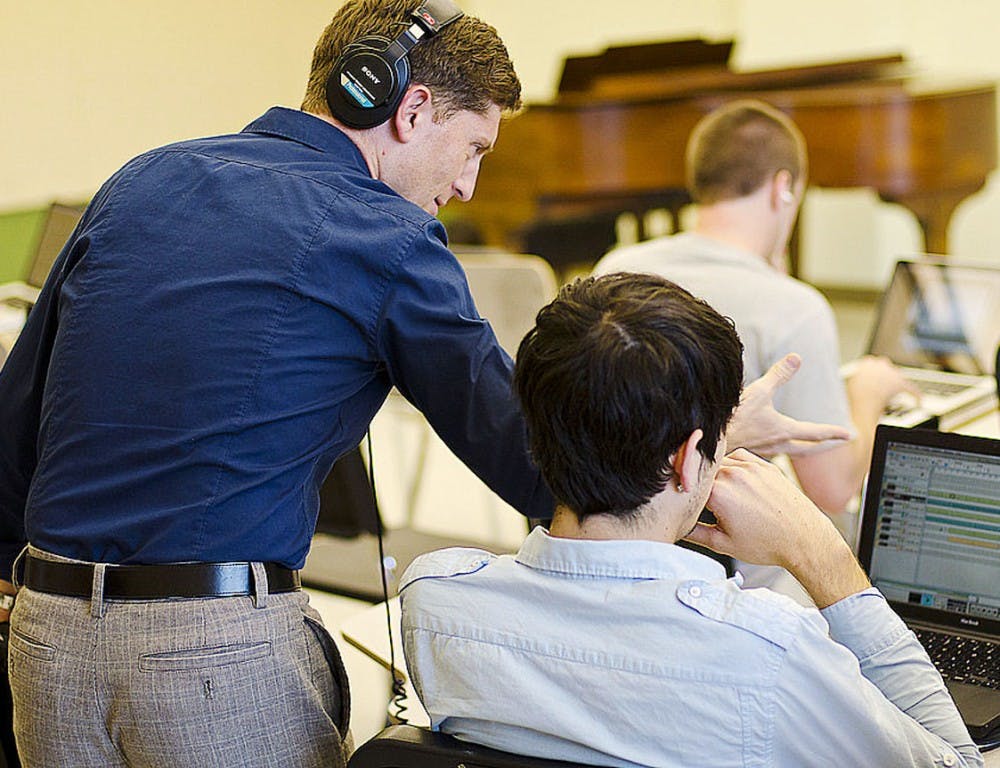On the third floor of Kenan Music Building, next to classrooms filled with rows of digital pianos, students in Introduction to Music Technology meet with their laptops and headphones to compose a new type of music with a different type of piano.
When students write in “beat making lab,” (students’ name for the class) their notations aren’t made on sheet music, but on what is known as the piano roll, a graphical representation of note data used to render music in digital audio workstations.
Composer Earle Brown, on his avant-garde score, “December 1952,” used graphic notation to instruct performers to abstractly interpret seemingly randomly spaced vertical and horizontal lines on a piece of paper. In the modern programs that electronic artists use to construct instrumentals and backing tracks, the performer is a computer protocol, and its interpretation of a piece is based on a left-to-right reading of Cartesian coordinates.
A beat maker, called a producer, picks the pitch of his sample along the y-axis, the ever-ascending notes of a piano, and its place in time along the x-axis, the beats that make up bars or measures of a composition.
“Put a bass drum on beats 1 and 3, add a snare drum on beats 2 and 4, run a high hat on every 8th note and you have a beat — it’s very simple,” said Mark Katz, UNC associate professor.
“But that’s just like learning the alphabet. It’s not literature.”
Katz co-teaches the course with Stephen Levitin, a producer that has made beats for hip-hop artists like Wale and Mos Def under the stage name Apple Juice Kid.
In their class, Katz brings the academic side of beat-making, while Levitin provides his perspective on the business side of being an electronic musician, teaching students how to brand themselves, secure rights to digital samples and avoid getting ripped off.
Assignments range from making a beat every week as a part of building a music portfolio, to writing papers on seminal producers.



